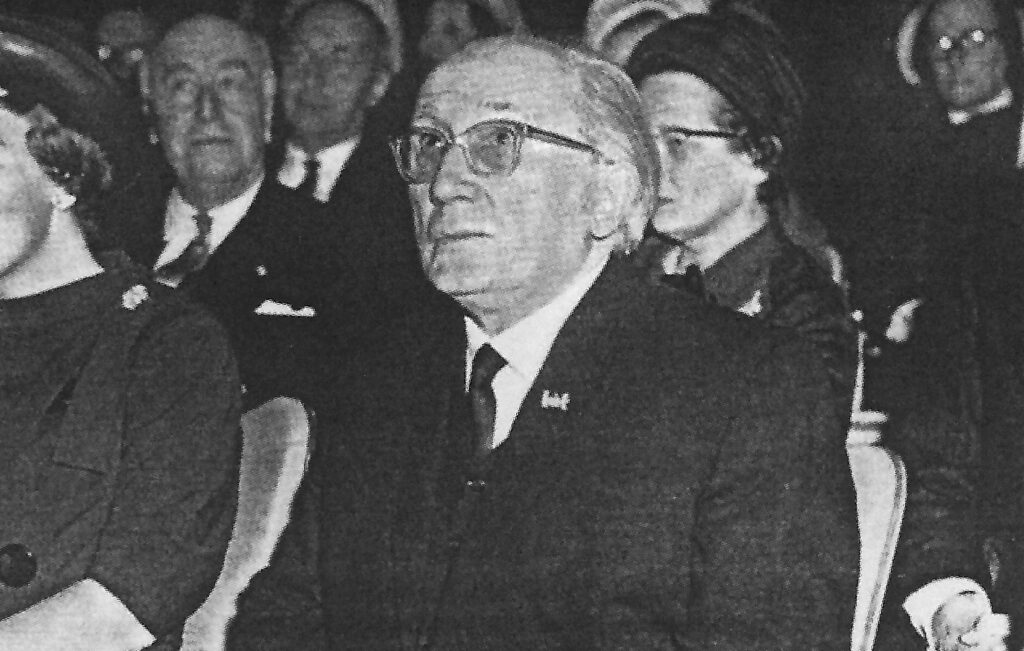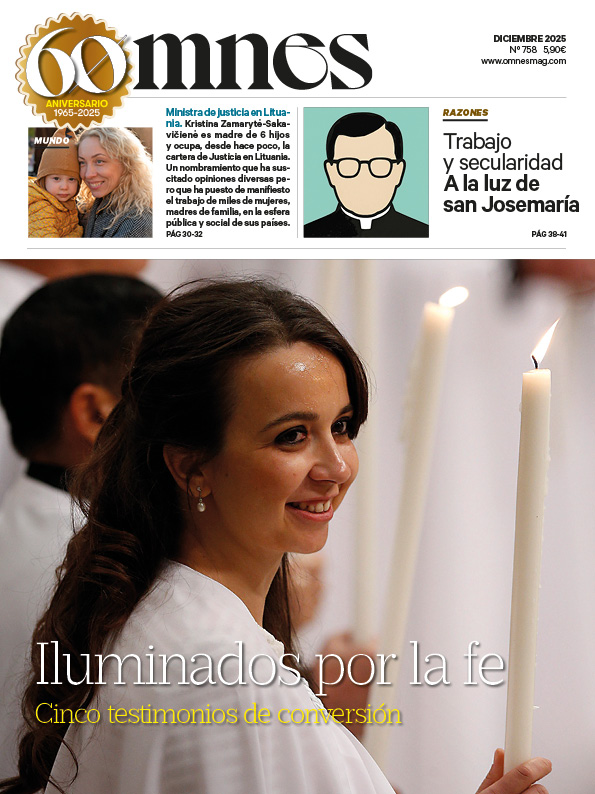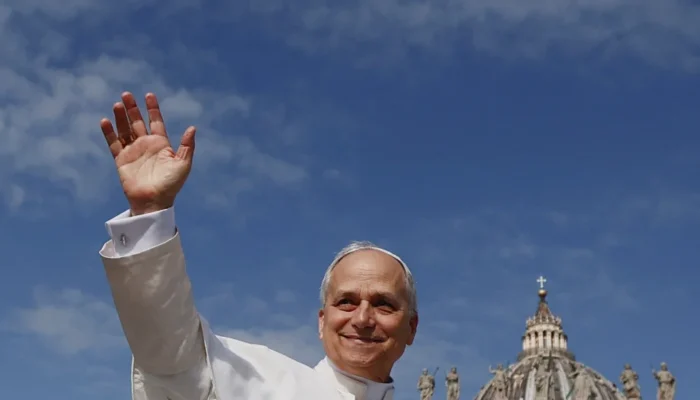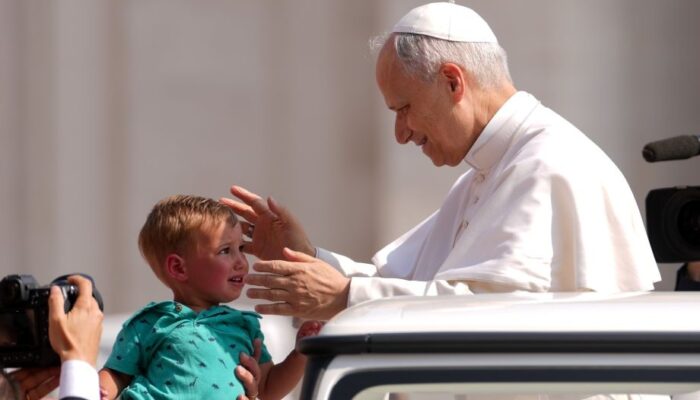It is always difficult to trace the history of ideas: what are the moments and contexts in which they take shape, are formulated and achieve diffusion. That Christianity is centered on the person of Christ was beautifully and clearly formulated by Guardini, with an impact that has marked the entire Catholic theology of the twentieth century. But evidently he did not invent it.
The Lord Himself implies it when He says "I am the way, the truth and the life, no one comes to the Father but by me." (Jn 14:6). With all the mysterious power of the "I am" of Christ, in the Gospel of St. John: "I am the bread of life" (Jn 6:35,48,51), "I am the light of the world." (Jn 8:12; 12:46-48), "I am the door." (Jn 10:1-6), "I am the resurrection." (Jn 11:25).
Contexts
On the one hand, there is the "liberal rationalist" effort, which, since the eighteenth century, has tried to reduce Christianity to some "universal" idea or essence, disregarding its historical concreteness, which seems doubtful. On the other hand, since the 19th century, the knowledge of other religions has grown exponentially: what do they have in common, what characterizes the religious fact? And, within this, what makes Christianity unique?
– Supernatural liberal protestant theologysince Schleiermacher, has assumed the idea that Christianity represents the essence of the religious in its most complete historical concreteness. Indeed, the religious can be defined as the relationship of submission and recognition towards the absolute. And, for Schleiermacher, Christianity realizes this in an eminent way.
But in parallel, during the 19th century, the comparative study of religions has spread. And just as one tries to find in other religions the outline and the elements that are so clearly observed in the Christian religion, with its beliefs, its sacred books, its morals, its worship and its church or believing community, one also tries to typify the Christian religion by comparison with the others. And Christ is seen in the Founder and Prophet of the Christian religion.
Of course, Jesus Christ is the founder and prophet of the Christian religion, the vehicle through which this message reaches and spreads throughout the world. But, above all, he is the center and the content of the message.
This is the singularity, which finds no resemblance in the history of religions. Buddha or Mohammed can be vehicles and even models in the practice of a religion (although in the case of Buddha it was more of a philosophy), but they are not its essence. On the other hand, with his Incarnation, the Word of God has made himself present in history in the form of a person. In Jesus Christ, the incarnate Son, God manifests himself and saves. This is why the Christian religion is not summed up in an idea but in a person.
Guardini will explain: "Jesus is not only the bearer of a message that demands a decision, but it is He Himself who provokes the decision, a decision imposed on every man, which penetrates all earthly attachments and which no power can either contrast or stop." (The essence of ChristianityCristiandad, Madrid 1984, p. 47).
The title
Two famous books already bore the same title. In 1841, Ludwig Feuerbach had published his The essence of Christianity. It was a reductive hermeneutic explanation of Christianity. Christianity would be the opposite of what it claims to be. Not the manifestation of a God who wants to save man, but the illusion of man who sublimates his own aspirations in the idea of God. God is only what we would like to be, taken to infinity.
Adolf von Harnack, a famous historian of Christian antiquity and a liberal Protestant, answered him with a series of lectures in the book The essence of Christianity (1901). This is not an illusion, but the commandment of love is the highest historical expression of inner human progress. Christian history has perhaps paid too much attention to the doctrine of God or of Jesus Christ - so it seems to him - but the essence lies in the realization of the inner man in justice and charity. That is what gives it its universal significance, for men of all times.
Actually, they had quite a lot in common. As children of their time, they found the history of salvation problematic and gave it only an allegorical value. But where Feuerbach saw an unhappy mirage, von Harnack found the ultimate manifestation of the human spirit.
The liberal naivety that wants to contemplate human progress in history, also religious, would be shipwrecked in the First World War. And Barth would judge harshly the attempt of liberal theology to make Christianity reasonable, turning it into an idea and essence. It is the scandal of revelation that has to judge reason, and not the other way around. Thus he saves it and takes it out of its limits. But Barth does not descend to concrete history.
Guardini's book
Without quoting him, Guardini follows the opposite itinerary to Harnack: he starts from the historical fact of Jesus Christ and shows his universal significance, which cannot be reduced to any idea. Jesus Christ, as he was and as he is, is the essence of the Christian religion.
As he points out in the "Preliminary Warning", The essence of Christianity was published in 1929, in the magazine Die Schildgenossen. But Guardini saw fit to publish it separately, because it seemed to him that it could serve as a "methodical introduction" to his other books on Christ, especially The image of Jesus, the Christ, in the New Testament, y The Lord.
It develops the argumentation in four parts that we will briefly follow: I. The problemII. By way of differentiationIII. The person of Christ and what is essentially and properly Christian. Finally, in section IV, Resultbriefly summarizes his thesis.
The problem
"The question of the essence of Christianity has been answered in many different ways. It has been said that the essence of Christianity is that in it the individual personality advances to the center of religious consciousness; it has also been affirmed that the essence of Christianity lies in the fact that in it God reveals Himself as Father, the believer being placed before Him [...]: it has also been maintained that the peculiarity of Christianity is that it is a religion that elevates love of neighbor to the category of a fundamental value [...]. Of all these answers, there is not one that hits the mark." (16). They are also false, "are formulated in the form of abstract propositions, subsuming their 'object' under general concepts." (17).
"Christianity is ultimately neither a doctrine of truth nor an interpretation of life. It is that too, but none of it constitutes its nuclear essence. Its essence is constituted by Jesus of Nazareth, by his existence, his work and his concrete destiny; that is to say, by a historical personality." (19).
This poses a "problem". Because we are used to submitting to rules or laws, but here it is a matter of "to recognize another person as the supreme law of the whole religious sphere.".
By way of differentiation
Discernment is needed: "A superficial glance is enough to realize the immeasurable significance of the person of Jesus in the New Testament." (25). Remember the case of Buddha, and also of the prophets of Israel: "The prophet as well as the apostle are bearers of the Message, laborers in the great work, but nothing more." (32). "By contrast with all that, it becomes clear how fundamentally different is the position of the person of Jesus in the religious order proclaimed by him." (33).
The person of Christ and what is essentially and properly Christian
There are many versions of Christ's message: he preached the coming Kingdom, universal love, a new idea of God. In short, "it has been repeatedly asserted that Jesus is not part of the content of his message." (37). Well then, "this theory is false" (38). For many reasons.
The first is that Jesus "explicitly demands that men follow him." (38), who opt for him, in a full-fledged way. In addition, his words and gestures "make the person of Christ appear as the criterion and motive for conduct". (40). Even the scandal of the "the fact that a historical person claims for himself an absolute religious significance." (50). "Everything Christian that comes from God to us, and likewise everything that goes from us to God, must pass through Him." (52). It is a mediation that is part of the content.
"The doctrine of Jesus is the doctrine of the Father. But not as in a prophet who receives and makes revelation known, but in the sense that its starting point is found in the Father, but, at the same time, also in Jesus." (60).
Salvation is also given in him and through him. This is why the frequent expression in St. Paul is understood: "in it"The liturgy: "Through Christ, with him and in him.". This is how Christians live, this is how they pray, this is how they are saved, by the action of the Holy Spirit. Each one in particular and, at the same time, all in the Church. And it is expressed in a special way in the Eucharist: all are called to eat his Body, a necessary condition for entering the Kingdom of Heaven.
Result
This last brief section concludes everything: "There is no doctrine, no fundamental structure of ethical values, no religious attitude, no order of life that can be separated from the person of Christ and which can then be said to be Christian. What is Christian is Himself, what through Him reaches man and the relationship that through Him man can maintain with God." (103).
Christianity has a doctrine and a morality (a system of values) and a public worship and personal prayer. It has; but it is neither a doctrine, nor a morality, nor a cult, nor a church. Its essence is Jesus Christ. Its doctrine, its morals, its worship are realized in Christ. And there is neither doctrine nor morals nor worship that are Christian if they are not rooted and expressed in Christ.
And finally, citing without citing the other "essences of Christianity," he concludes: "The thesis that Christianity is the religion of love can only be accurate in the sense that Christianity is the religion of love for Christ and, through Él, of love directed to God, as well as to other men [...]. Love for Christ is, then, the attitude that gives absolute meaning to all that is. All life must be determined by him". (105).
The Italian theologian and bishop Bruno Forte has an essay on The essence of Christianity (2002), with a rethinking of the topic today and some historical assessments; and also the Spanish theologian Olegario González de Cardedal wrote The essence of Christianity (1997), much more voluminous and extensive, although with less detail as far as Guardini is concerned.











